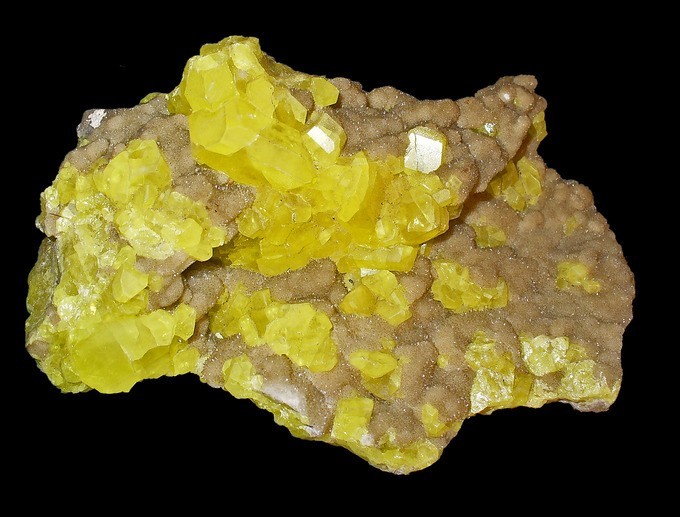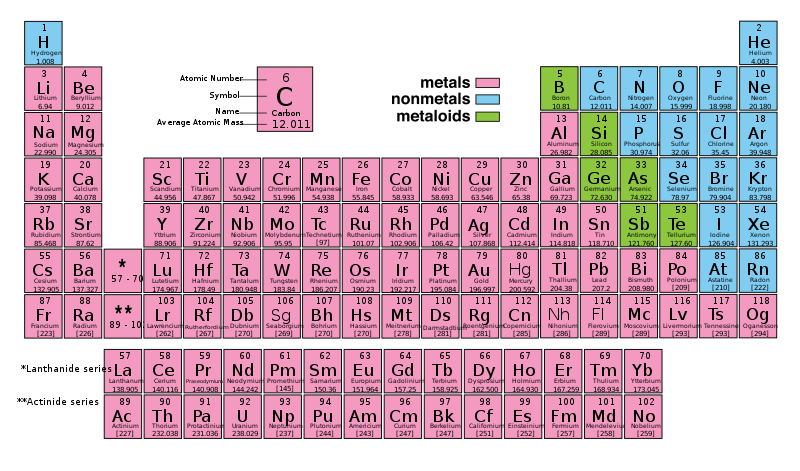
Substances are composed of pure elements or chemically bonded elements, whereas mixtures are composed of nonbonded substances.
Distinguish chemical substances from mixtures.
In chemistry, a chemical substance is a form of matter that has constant chemical composition and characteristic properties. It cannot be separated into components without breaking chemical bonds. Chemical substances can be solids, liquids, gases, or plasma. Changes in temperature or pressure can cause substances to shift between the different phases of matter.
An element is a chemical substance that is made up of a particular kind of atom and hence cannot be broken down or transformed by a chemical reaction into a different element. All atoms of an element have the same number of protons, though they may have different numbers of neutrons and electrons.
A pure chemical compound is a chemical substance that is composed of a particular set of molecules or ions that are chemically bonded. Two or more elements combined into one substance through a chemical reaction, such as water, form a chemical compound. All compounds are substances, but not all substances are compounds. A chemical compound can be either atoms bonded together in molecules or crystals in which atoms, molecules, or ions form a crystalline lattice. Compounds made primarily of carbon and hydrogen atoms are called organic compounds, and all others are called inorganic compounds. Compounds containing bonds between carbon and a metal are called organometallic compounds.
Chemical substances are often called “pure” to set them apart from mixtures. A common example of a chemical substance is pure water; it always has the same properties and the same ratio of hydrogen to oxygen whether it is isolated from a river or made in a laboratory. Other chemical substances commonly encountered in pure form are diamond (carbon), gold, table salt (sodium chloride), and refined sugar (sucrose). Simple or seemingly pure substances found in nature can in fact be mixtures of chemical substances. For example, tap water may contain small amounts of dissolved sodium chloride and compounds containing iron, calcium, and many other chemical substances. Pure distilled water is a substance, but seawater, since it contains ions and complex molecules, is a mixture.
A mixture is a material system made up of two or more different substances, which are mixed but not combined chemically. A mixture refers to the physical combination of two or more substances in which the identities of the individual substances are retained. Mixtures take the form of alloys, solutions, suspensions, and colloids.

A heterogeneous mixture is a mixture of two or more chemical substances (elements or compounds) where the different components can be visually distinguished and easily separated by physical means. Examples include:
https://lab.concord.org/embeddable.html#interactives/sam/intermolecular-attractions/3-1-oil-and-water.json
Interactive: Oil and Water: Explore the interactions that cause water and oil to separate from a mixture.
A homogeneous mixture is a mixture of two or more chemical substances (elements or compounds) where the different components cannot be visually distinguished. Often separating the components of a homogeneous mixture is more challenging than separating the components of a heterogeneous mixture.
Distinguishing between homogeneous and heterogeneous mixtures is a matter of the scale of sampling. On a small enough scale, any mixture can be said to be heterogeneous because a sample could be as small as a single molecule. In practical terms, if the property of interest is the same regardless of how much of the mixture is taken, the mixture is homogeneous.
A mixture’s physical properties, such as its melting point, may differ from those of its individual components. Some mixtures can be separated into their components by physical (mechanical or thermal) means.
An element is a material that consists of a single type of atom while a compound consists of two or more types of atoms.
Differentiate between elements and compounds and explore separation techniques.
A chemical element is a pure substance that consists of one type of atom. Each atom has an atomic number which represents the number of protons that are in the nucleus of a single atom of that element. The periodic table of elements is ordered by ascending atomic number.
The chemical elements are divided into the metals, the metalloids, and the nonmetals. Metals, typically found on the left side of the periodic table, are
Aluminum, iron, copper, gold, mercury and lead are metals.
In contrast, nonmetals, found on the right side of the periodic table (to the right of the staircase), are
Examples of elemental nonmetals include carbon and oxygen.
Metalloids have some characteristics of metals and some characteristics of nonmetals. Silicon and arsenic are metalloids.
As of November 2011, 118 elements have been identified (the most recently identified was ununseptium in 2010). Of these 118 known elements, only the first 98 are known to occur naturally on Earth. The elements that do not occur naturally on Earth are the synthetic products of man-made nuclear reactions. 80 of the 98 naturally occurring elements are stable; the rest are radioactive, which means they decay into lighter elements over timescales ranging from fractions of a second to billions of years.

Hydrogen and helium are by far the most abundant elements in the universe. However, iron is the most abundant element (by mass) in the composition of the Earth, and oxygen is the most common element in the layer that is the Earth’s crust.
Although all known chemical matter is composed of these elements, chemical matter itself constitutes only about 15% of the matter in the universe. The remainder is dark matter, a mysterious substance that is not composed of chemical elements. Dark matter lacks protons, neutrons, or electrons.
Pure samples of isolated elements are uncommon in nature. While the 98 naturally occurring elements have all been identified in mineral samples from the Earth’s crust, only a small minority of them can be found as recognizable, relatively pure minerals. Among the more common of such “native elements” are copper, silver, gold, and sulfur. Carbon is also commonly found in the form of coal, graphite, and diamonds. The noble gases (e.g., neon) and noble metals (e.g., mercury) can also be found in their pure, nonbonded forms in nature. Still, most of these elements are found in mixtures.
When two distinct elements are chemically combined—i.e., chemical bonds form between their atoms—the result is called a chemical compound. Most elements on Earth bond with other elements to form chemical compounds, such as sodium (Na) and chloride (Cl), which combine to form table salt (NaCl). Water is another example of a chemical compound. The two or more component elements of a compound can be separated through chemical reactions.
Chemical compounds have a unique and defined structure which consists of a fixed ratio of atoms held together in a defined spatial arrangement by chemical bonds. Chemical compounds can be
Pure chemical elements are not considered chemical compounds, even if they consist of diatomic or polyatomic molecules (molecules that contain only multiple atoms of a single element, such as H2 or S8).
This chapter is an adaptation of the chapter “ Classification of Matter ” in Boundless Chemistry by LumenLearning and is licensed under a CC BY-SA 4.0 license.
definitionSomething that consists of diverse, non-bonded elements or molecules.
× Close definitionAny one of the simplest chemical substances that cannot be decomposed in a chemical reaction or by any chemical means, and are made up of atoms all having the same number of protons.
× Close definitionA form of matter that has constant chemical composition and characteristic properties. It is composed of one type of atom or molecule.
× Close definitionAny of several attractive forces that serve to bind atoms together to form molecules.
× Close definitionA substance made from two or more elements. Consists of a fixed ratio of chemically bonded atoms. Has unique properties that are different from the properties of its individual elements.